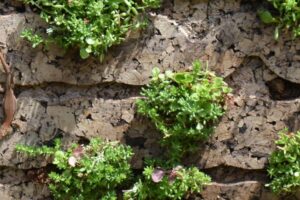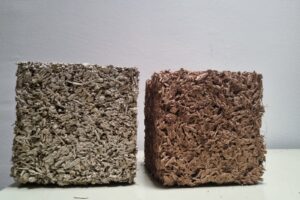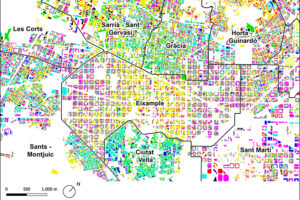
USEFUL: A car equipped with AI and optical sensors that will collect vast amounts of data for autonomous driving
October 25, 2024
ELEGANT – 6G-OpenLab: A unique infrastructure as a real-world testbed for 6G applications
October 29, 202429/10/2024
The European project LIFE BIOGASNET, coordinated by the Biological Treatment of Gaseous Pollutants and Odours Group (BIOGAP) at the Universitat Politècnica de Catalunya - BarcelonaTech (UPC), has validated a new biogas purification technology that improves the quality of this resource, produced in urban solid waste treatment plants and wastewater treatment facilities, while reducing the carbon footprint, thus promoting the concept of a circular economy. The new solution is based on efficient, low-cost biological technologies, combining a biotrickling filter with a nitrification bioreactor.
This innovation aims to desulphurize biogas produced in urban solid waste treatment plants and wastewater treatment facilities. This process is essential for using biogas as fuel, and the current technologies that make this possible entail high economic costs and significant environmental impact.
The developed system has been tested for a year in a municipal solid waste treatment plant located in Cádiz (Spain) and later in a municipal solid waste treatment plant in the Attica region, Athens (Greece). Different sources of ammonia-rich effluents have been used in both facilities to desulphurize biogas, aiming to validate the technology and its performance in diverse settings and conditions.
In parallel, extensive studies have been carried out on the environmental impact of the technology to objectively demonstrate the most favourable scenarios for its implementation. In this regard, scalability studies have been conducted for facilities other than those hosting the project system, such as wastewater treatment plants.
To validate the technology installed in Cadiz, an anoxic bioreactor was included to remove hydrogen sulphide from biogas with efficiencies above 97%. Hydrogen sulphide removal is carried out using nitrate and/or nitrite, which is obtained in a nitrification bioreactor using landfill leachate as the ammonia source. The hydrogen sulphide is oxidised mainly to elemental sulphur, a reusable by-product.
In the Athens plant, the process initially involved capturing the ammonia present in the residual gases from a composting plant in a liquid stream using a bioscrubber. This stream was nitrified to nitrite and/or nitrate to be used in an anoxic biotrickling filter to eliminate hydrogen sulphide by oxidising it primarily to sulphate. Finally, this sulphate was combined with part of the ammonia-rich liquid to produce ammonium sulphate in a CSTR reactor, effectively converting the waste gases into a useful product.
The validated technology thus enables the simultaneous treatment of two types of pollutants: hydrogen sulphide in biogas and ammonia in residual liquid and gaseous effluents, in a single system, producing an added-value by-product that can be commercialised as a raw material.
LIFE Biogasnet technology presents environmental advantages compared to other current biogas desulphurization practices, as it reduces the environmental footprint and greenhouse gas emissions by up to 55%, decreases the consumption of reagents, and additionally allows secondary raw materials to be produced from the hydrogen sulphide contained in biogas, thereby minimising waste production.
The LIFE Biogasnet consortium also included the University of Cádiz, the National Technical University of Athens, the Eurecat Technology Centre of Catalonia, and the companies AERIS Tecnologías Ambientales and Bioreciclaje de Cádiz S.A. It has had a total budget of €2,254,468 and a duration of 5 years (2019-2024).
Related Projects
- The La Volta project foresees the construction of a large Catalan vault pergola within the Llars Mundet campus, in the Montbau neighbourhood (Horta-Guinardó district). This structure will become a new architectural landmark for Barcelona, combining traditional construction techniques with contemporary innovation. The project involves the Rehabilitation and Architectural Restoration Research Group (REARQ), at the Universitat Politècnica de Catalunya - BarcelonaTech (UPC), and is led by the Architects’ Association of Catalonia (COAC) and the Barcelona Provincial Council.
SATE-VEG: A system for energy renovation of buildings that helps reduce the urban heat island effect
Researchers from the Architecture, Energy and Environment (AiEM) group at the Universitat Politècnica de Catalunya - BarcelonaTech (UPC) have developed SATE-VEG, an external thermal insulation system with a vegetal coating that offers seasonally adaptive thermal behaviour, enhances urban biodiversity and promotes positive health effects. The system is made from organic materials, requires low maintenance and consumes minimal water.- A research team from the Interdisciplinary Group on Building Science and Technology (GICITED) at the Universitat Politècnica de Catalunya – BarcelonaTech (UPC) is leading the BioSAFE project, which aims to develop sustainable building envelopes —mainly façades— designed according to sustainability, comfort and safety criteria, with particular attention to their acoustic behaviour and fire performance.
- The Architecture, Energy and Environment (AiEM) research group at the Universitat Politècnica de Catalunya - BarcelonaTech (UPC) has characterised Barcelona’s residential buildings according to their capacity to adapt to climate change. This study is part of the project ‘VeUvE: Urban havens for vulnerable zones’. The work highlights the climate inequality conditions present across different areas of the city and will help to better define the priorities and energy renovation strategies for its districts.








